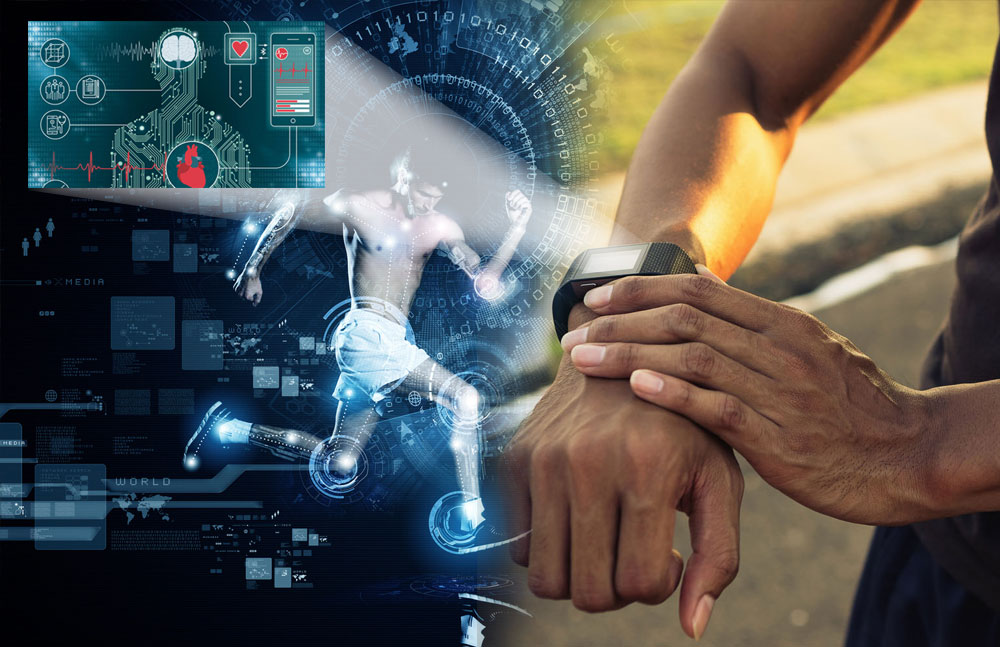Wearable technology and athlete tracking have completely transformed the world of sports and fitness. These amazing advancements involve athletes wearing devices that collect data, on their performance movements and vital signs during training sessions and competitions. The collected data is then carefully analyzed to optimize training routines enhance performance prevent injuries and promote health and well-being.
Now lets take a look at Wearable technology and athlete tracking
Different Types of Wearable Technologies
a. Fitness Trackers
These fantastic devices like Fitbit and Garmin keep track of metrics such as steps taken distance covered calories burned, heart rate monitoring and even sleep patterns. They are highly popular for monitoring activities as well as general fitness.
b. Smartwatches
Smartwatches such as the Apple Watch or Samsung Galaxy Watch do not offer fitness tracking capabilities. Also provide additional functionalities like notifications GPS navigation features and various apps. They offer a range of data collection options for fitness enthusiasts as well as professional athletes.
c. Smart Clothing
Innovative clothing items embedded with sensors and smart fabric can monitor a variety of parameters including heart rate measurement, muscle activity tracking, and body temperature monitoring, among others. Examples include compression shirts or sports bras integrated with state-of-the-art sensors.
d. Wearable Sports Equipment
Some sports equipment, like basketballs or soccer balls that have sensors embedded in them can collect data on metrics such as speed, spin rate, and shot accuracy. This information is valuable for gaining insights into an athlete’s performance and technique.
Key Metrics Being Tracked
a. Heart Rate
Monitoring an athlete’s heart rate helps understand their exertion levels allowing for optimal intensity control during training sessions while also avoiding overexertion.
b. Location Data
By utilizing GPS tracking technology athletes can gather data on the distance covered speed, routes taken, and even elevation changes during activities, like running, cycling or hiking.
c. Biomechanics
Wearable devices have the capability to analyze an athlete’s movements, such, as their acceleration, deceleration, gait and posture. This valuable data can be used to improve technique and prevent injuries.
d. Recovery
Wearable devices can also assess an athlete’s sleep quality and duration which is crucial for recovery and optimal performance.
Benefits of Wearable technology
a. Performance Enhancement
By tracking athletes’ progress we can analyze performance metrics identify strengths and weaknesses and customize training programs to maximize performance.
b. Injury Prevention
Monitoring movements and biomechanics enables us to identify patterns and potential injury risks. This information empowers athletes to adjust their techniques accordingly.
c. Recovery Management
By monitoring activity levels, heart rate and sleep patterns through devices we can guide recovery strategies that ensure athletes are adequately rested for their next training session or competition.
d. Informed Decision Making Based on Data
Real-time data collected by devices allows coaches and athletes to make decisions regarding training strategies as well as game time decisions.
Challenges and Future Developments
a. Data Privacy and Security
Ensuring the protection of health data collected from athletes is of importance. Strict privacy measures along with data storage systems are crucial, in addressing this concern.
b. Compatibility and Standardization
Making devices and platforms work together smoothly is a difficult task to ensure that data collection and analysis are consistent.
c. Long-lasting Battery Life and Durability
Improving the battery life of wearables and making them durable for sports activities are areas that need continuous enhancements.
d. Merging. Machine Learning
Future progress involves integrating AI and machine learning algorithms to analyze the data collected offering advanced insights and recommendations.
Wearable technology and athlete tracking continue to evolve, empowering athletes, coaches, and sports scientists to optimize training, improve performance, and elevate the overall sports experience.

